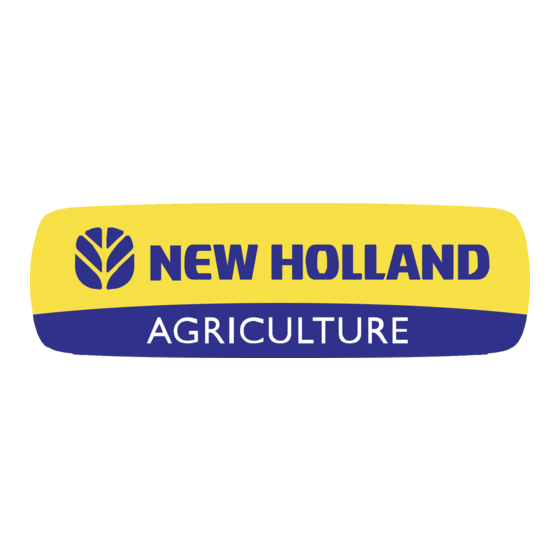
Summarization of Contents
1. INTRODUCTION
1.1. General Information
General overview of the operator's manual and its importance for safe operation.
1.2. Identification
Details how to identify the loader model and serial number.
1.3. Alignment Reference
Explains how directional references (left/right) are made within the manual.
2. DESCRIPTION
2.1. Definitions
Defines key terms and components related to the loader and its parts.
2.2. Tool Carrier Types
Describes the two main styles of tool carriers: Euro and Skid Steer Loader.
3. SAFETY INSTRUCTIONS
3.1. General Safety Information
Emphasizes operator safety, compliance with instructions, and use of approved implements.
3.2. Signal Words
Explains the critical meanings of DANGER, WARNING, and CAUTION signal words.
3.3. Symbol Explanation
Illustrates and explains the meaning of various safety symbols used in the manual.
3.4. Installing the Loader
Covers important precautions and considerations for the installation process.
3.4.1. Joystick Operation
Describes the self-neutralizing safety feature of the joystick controller.
3.5. Protection Equipment
Details the importance of seat belts and Roll Over Protective Structures (ROPS).
3.5.2. Counterweight and Tread Width
Explains the role of ballast and tread settings in maintaining machine stability.
3.7. Operation
General guidelines for operating the loader safely and effectively.
3.7.1. Operator's Position
Stresses operating the loader only from the designated operator's seat.
3.7.2. Workplace
Covers safety checks of the work area and surroundings before operation.
3.7.3. Load Stability
Provides critical guidance on maintaining load stability and preventing objects from falling.
3.7.4. Machine Stability
Details safe operation practices on slopes and avoiding overturning the tractor.
3.8. Risk Factors During Operation
Identifies and explains various risk factors encountered during loader operation.
3.8.1. During Transport
Outlines safety precautions and considerations for operating the loader during transport.
3.8.2. During Service
Covers essential safety precautions to follow when performing maintenance or service.
3.8.3. Replacement Parts
Emphasizes the importance of using genuine original equipment spare parts.
3.9. Location of Safety Signs
Illustrates the placement of various safety signs on the loader and its components.
4. INSTALLING THE LOADER
4.1. Install Position Indicator
Details the procedure for mounting and adjusting the loader's position indicator.
4.2. Check List
Lists essential checks to perform after installation before the loader is put into service.
5. OPERATION
5.1. Tractor/Loader Stability
Addresses critical aspects of tractor and loader stability for safe operation.
5.1.1. Determination of Ballast
Explains how to determine and apply proper ballast for optimal stability.
5.1.2. Minimum Tread Settings
Provides recommendations for minimum tread settings to ensure stability.
5.1.3. Joystick Operation
Details the self-neutralizing safety feature of the loader's joystick controller.
5.2. Connection and Operation Options
Describes the two methods for connecting the loader's hydraulic system to the tractor.
5.3. Disconnecting a Loader
Provides safety precautions and step-by-step instructions for safely disconnecting the loader.
5.4. Connecting a Loader
Details the procedure for safely connecting the loader to the tractor, including hydraulic connections.
5.5. Loader Operation
Covers general operation of the loader, including safety and stability.
5.5.1. Counterweight and Tread Width
Reiterates the importance of counterweight and tire settings for machine stability.
5.5.2. Checking Attachment
Ensures that the implement is correctly secured to the tool carrier with locking pins.
5.5.3. Load Stability
Provides guidance on maintaining load stability and preventing objects from falling.
5.5.3.1. Machine Stability
Covers safe operation practices on slopes and avoiding overturning the tractor.
5.6. Operation with Bale Spike
Details the safe operation of the loader when using a bale spike attachment.
5.7. Coupling and Uncoupling Implements
Covers procedures for attaching and detaching implements from the tool carrier.
5.7.1. Uncoupling Implements (Euro 8)
Step-by-step guide to safely uncoupling Euro 8 tool carrier implements.
5.7.2. Coupling Implements (Euro 8)
Step-by-step guide to safely coupling Euro 8 tool carrier implements.
5.7.3. Uncoupling Implements (Skid Steer)
Guide to safely uncoupling Skid Steer loader implements.
5.7.4. Coupling Implements (Skid Steer)
Guide to safely coupling Skid Steer loader implements.
6. MAINTENANCE
6.1. Lubrication
Details the lubrication schedule and points for the loader, including grease fittings.
6.2. Hydraulic System Checks
Covers checking the hydraulic system for oil level, leaks, and component integrity.
6.2.2. Hydraulic Components
Provides guidance on repairing or replacing hydraulic components like cylinders and hoses.
6.3. Loader and Subframe Hardware
Instructions for checking structural integrity, fasteners, and torque specifications.
6.3.1.1. Torque Table
Provides torque specifications for various hardware sizes used in loader assembly.
6.4. Storage
Advice on proper storage procedures for the loader when it is not in use.
6.5. Transporting the Loader
Details safe methods for transporting the loader, with or without a tractor.












Need help?
Do you have a question about the 626TL and is the answer not in the manual?
Questions and answers